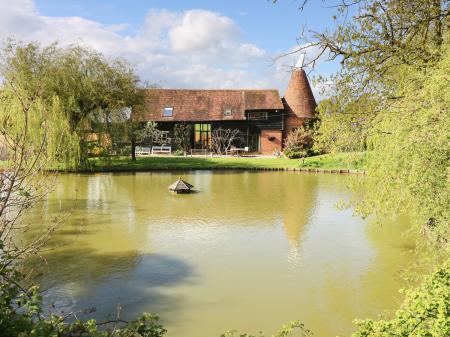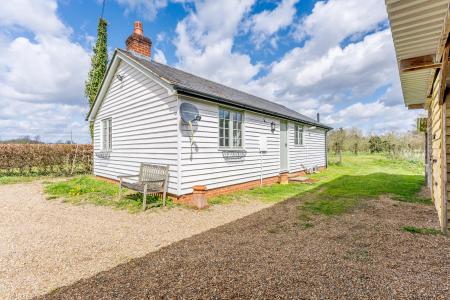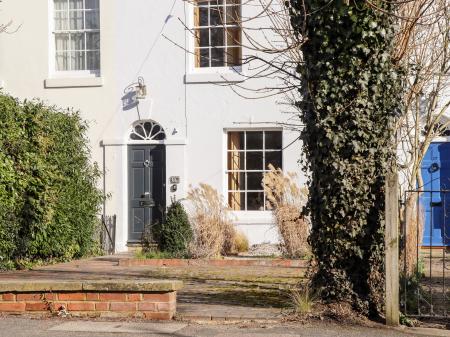
What to See
There are also a pair of blocked up lancet windows in the east end which predate the 13th century. The spire was added in the 14th century, as were the chancel, door and tower window.
The whole building was enlarged in the 15th century when the font was built. This is an interesting creation, which bears the arms of the Dering family of Surrenden Dering house; a black cross on a gold field. It also has the three left-hand symbol of the Malmain family. The font cover is built with wood salvaged from Surrenden Dering house when it was demolished after a fire in 1957.
There is a very nice wooden screen separating the Dering chapel and the south aisle. This screen dates from 1635.
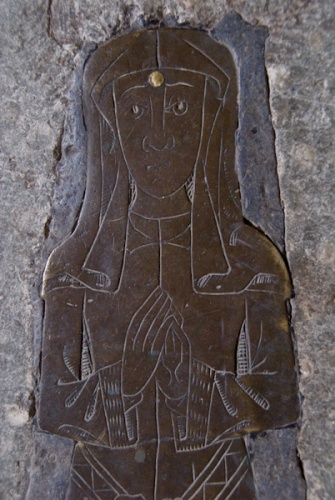
Medieval Brasses
The best feature of St Nicholas is its collection of medieval and Tudor brasses. There are nine of these, consisting of eight Derings and one Malmain. The oldest brass is that of John Dering, who died in 1425. The most recent is that of Richard Dering (d. 1610).
The east chapel, or Dering Chapel, was rebuilt by Edward Dering in the 17th century over the Dering family vault. In 1665 this Sir Edward Dering sold timber to the navy to make ships for the Dutch wars.
A later Dering, Sir Edward Cholmley Dering, converted most of the houses in the village to round-headed windows outlined in white, presumably because he imagined it would bring luck. It didn't, for the expense of the project marked the start of a decline in family fortunes, and the Dering estate was sold in 1928.
In the south aisle is a tablet marking the 300th anniversary of the raising of the 24th Regiment of Foot by Sir Edward Dering, the 3rd baronet. This regiment was eventually merged into the Royal Regiment of Wales.
In the porch are benefaction boards recording two gifts of alms to elderly people. These are still awarded each year on 21 December by the villagers of Pluckley.
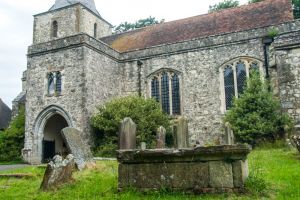











 We've 'tagged' this attraction information to help you find related historic attractions and learn more about major time periods mentioned.
We've 'tagged' this attraction information to help you find related historic attractions and learn more about major time periods mentioned.
